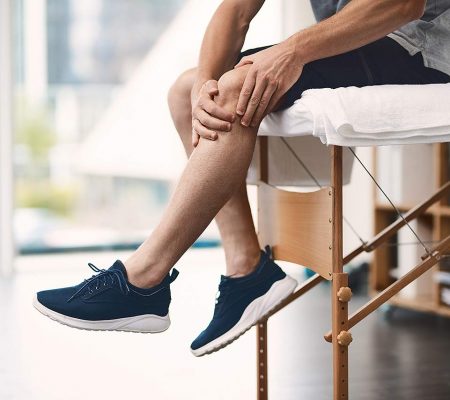Beyond the Big Game: 4 Sports Injury Recovery Tips for Any Athlete
The Big Game marks the end of football season. Even though the Packers didn’t go all the way this year, chances are you tuned in to watch the show. We cheer, we yell, and we cringe at every tackle, hoping no one gets hurt.
Just like professional athletes of any sport can get sidelined by an injury, so can the rest of us. Whether you’re a weekend warrior pounding the pavement in your running sneakers, a member of a social league team at your local tavern, or a concerned parent helping your student-athlete stay safe, chances are high you’ve needed to treat an occasional injury.
Any athlete needs to understand the basics of sports injury recovery. When you play sports or engage in athletic activities, do your best to warm up, wear proper gear, and play it safe. Should an injury occur, here’s the best approach for a speedy recovery.
1. KNOW YOUR LIMITS
The first tip for any athlete is to remember the adage, “An ounce of prevention is worth a pound of cure.” Avoiding injury is always best. Take precautions like hydrating, stretching, wearing the right gear, and warming up before any activity. Follow the rules and consult with your coach, trainer, or physical therapist about the correct form (especially if you’ve sustained injuries in the past).
Many people end up getting injured when they ramp up their training or push toward a new fitness goal. While exercise is critical for your health, remember to take it slow. Going from high school sports to college levels (or college to the big leagues) is a huge step for athletes. It’s not uncommon to see student athletic injuries due to overtraining.
On the same note, when you jump on the court to relive your glory years, don’t expect yourself to pull off the same moves – especially if it’s been a while. Pickup games are often a significant cause of injury for occasional athletes. Know your limits and don’t push yourself to go for the goal straight off the bench.
DON’T FEAR MAINTENANCE MODE
Many athletes fear backsliding during the offseason. It’s important to keep up your training and cross-train even during the months when you aren’t playing regularly. That said, you don’t need to push yourself to maintain peak form—rest is a vital part of recovery.
Once you’ve completed the marathon or won the Big Game, take time to enjoy your victory lap or that vacation with family. After you’ve recovered for a few days, don’t fear maintenance mode. During this time, you might not log your training mileage or spend hours on the field, but you can still keep up your physical fitness.
Offseason is an excellent time for cross-training as well. Many football players find yoga, for example, is a great way to keep their flexibility and core strength. Consider the gaps in your favorite sport and aim for an activity to bridge the space. Runners may want to add resistance or weight training to their regimen; basketball players may wish to build their speed and stamina with HIIT or cardio.
3. REMEMBER RICE
Should you sustain a minor injury, the first step to sports injury recovery is to remember RICE: rest, ice, compression, elevation. For many minor injuries and muscle strains, this is often enough to get you back in the game.
Many athletes struggle with the rest portion of sports injury recovery, but it’s critical for making a full comeback. Muscles need time to heal and rebuild. Even when you haven’t sustained an injury, soreness is a sign your muscles are building. Whenever you work out, your muscles sustain microtears, and a day or two of rest, (along with balanced nutrition) allows them to heal and grow.
When you feel pain, don’t ignore it. Get off the field and address the issue right away. Ice is especially helpful right after an injury, as it lowers the initial inflammation. Elevation and compression will keep swelling down but don’t wrap too tightly and disrupt blood flow. All these factors are important for speedy sports injury recovery. If the RICE treatment isn’t helping your injury quickly, or if you suspect it’s more severe than a muscle strain, it’s likely time to consult with experts for more in-depth help.
CONSULT WITH EXPERTS
At OHOW, our team of highly-trained expert physical therapists is ready to help you with treatment and a sports injury recovery plan. Many injuries occur because players “play through the pain” or put off seeking treatment right away, but this often leads to longer recovery time. A physical therapist will pinpoint exactly where your issue originated and help you figure out the right activity to help your body recover as quickly and thoroughly as possible.
A physical therapist will also help you prevent further sports injuries down the road. For example, knee or ankle pain may indicate weakness in the glutes or other leg muscles, or it could mean balance concerns. Core strength may factor in upper-body injuries. Without the guidance of a physical therapist, you might address the injury without learning adjustments to your form to prevent the damage from happening again in the future.
Most importantly, if you do sustain a sports injury, don’t despair. With the guidance of a physical therapist or orthopedic specialist, you will recover and get back in the game soon. At OHOW, we treat many different athletic-related injuries from ACL tears and sprains, to joint issues, to upper-body injuries. We’ll help you find the best road to recovery.
Our team of expert practitioners is ready to help you. Request an appointment online or call 414-961-6800 to set up a consultation with a member of our physical therapy team. Don’t let a sports injury keep you on the sidelines!


